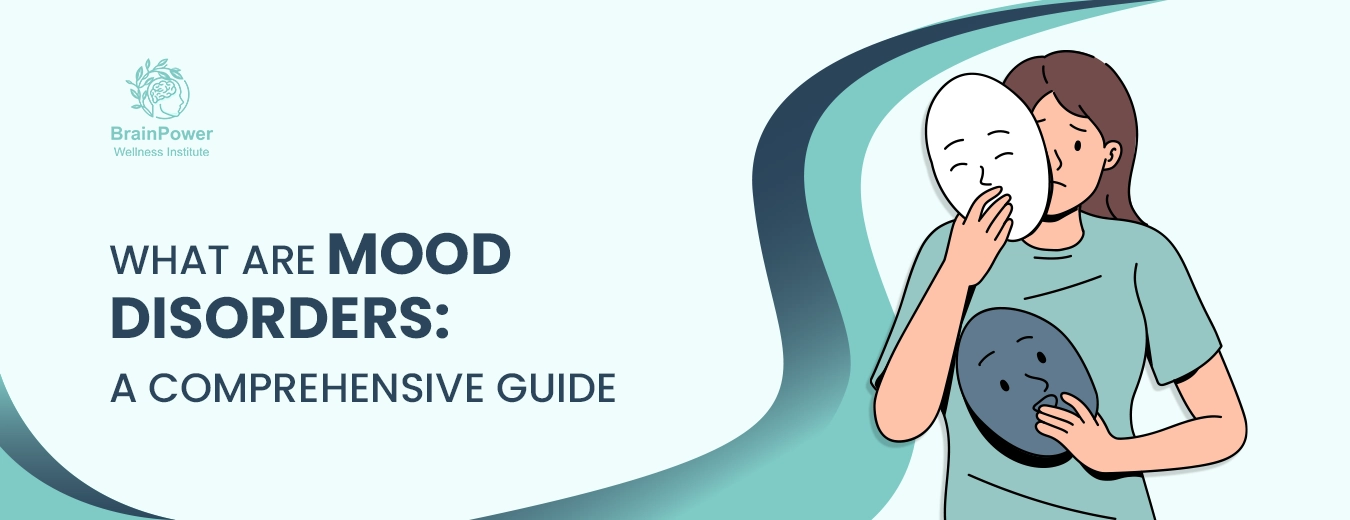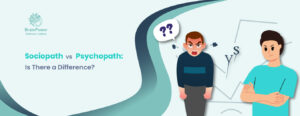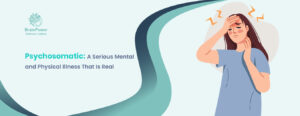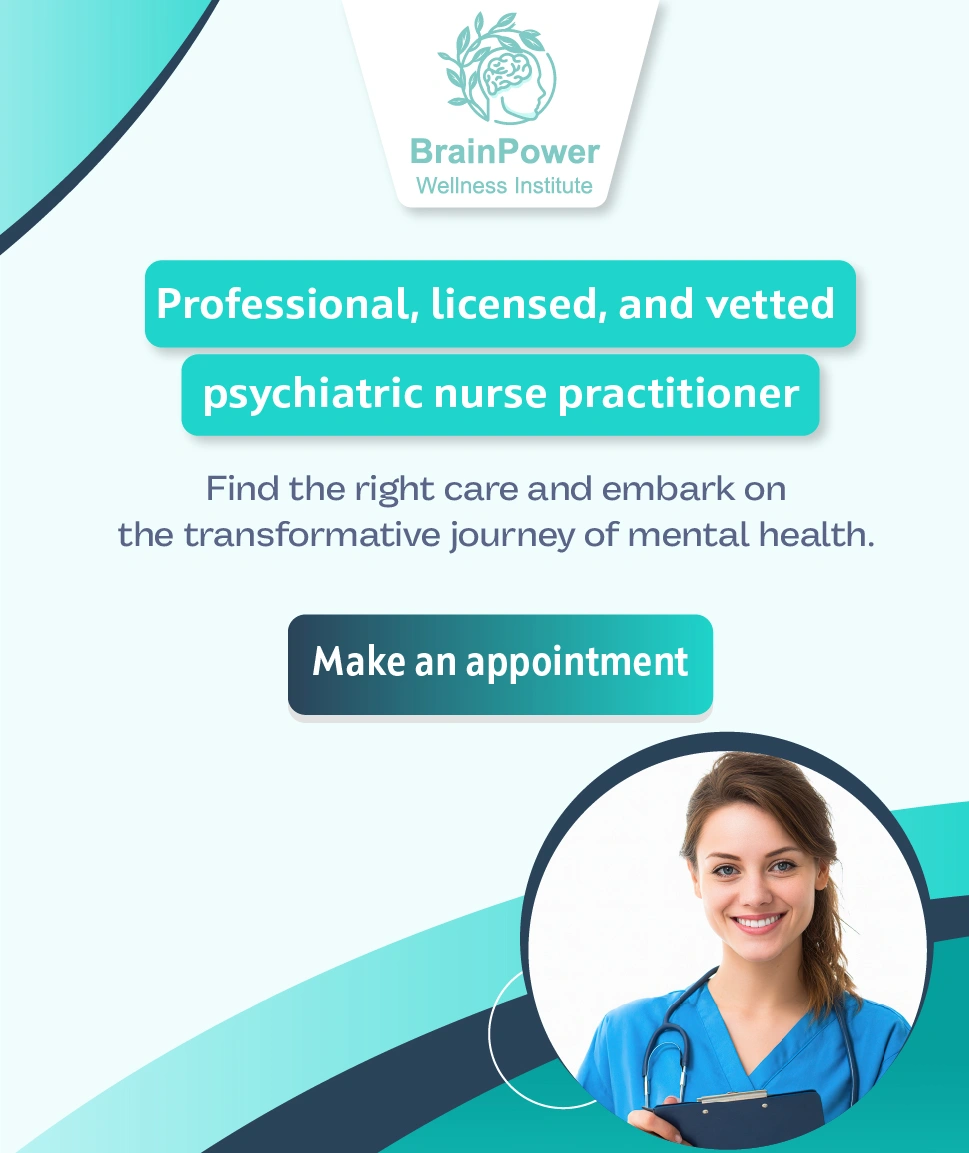Mood disorder is a psychiatric disorder that causes changes in a person’s mood, thinking, behavior, and physiology. They are generally categorized into two main types: affective disorders and depressive disorders.
Those of an affective nature include bipolar affective disorder and seasonal affective disorder, while depressive disorders include episode depressive disorder and recurrent depressive disorder. In this blog, we’ll discuss all the important details about what are mood disorders, their causes their treatment, etc.
Keep Reading!
Signs of A Mood Disorder
Recognizing the signs of a mood disorder is crucial for early intervention. Here are the key signs of mood disorder,
- Persistent sadness or irritability
- Changes in sleep and appetite
- Fatigue and low energy
- Difficulty concentrating
- Loss of interest in activities
- Physical symptoms like aches
- Social withdrawal
- Mood swings
- Suicidal thoughts
- Impaired functioning
- Changes in behavior
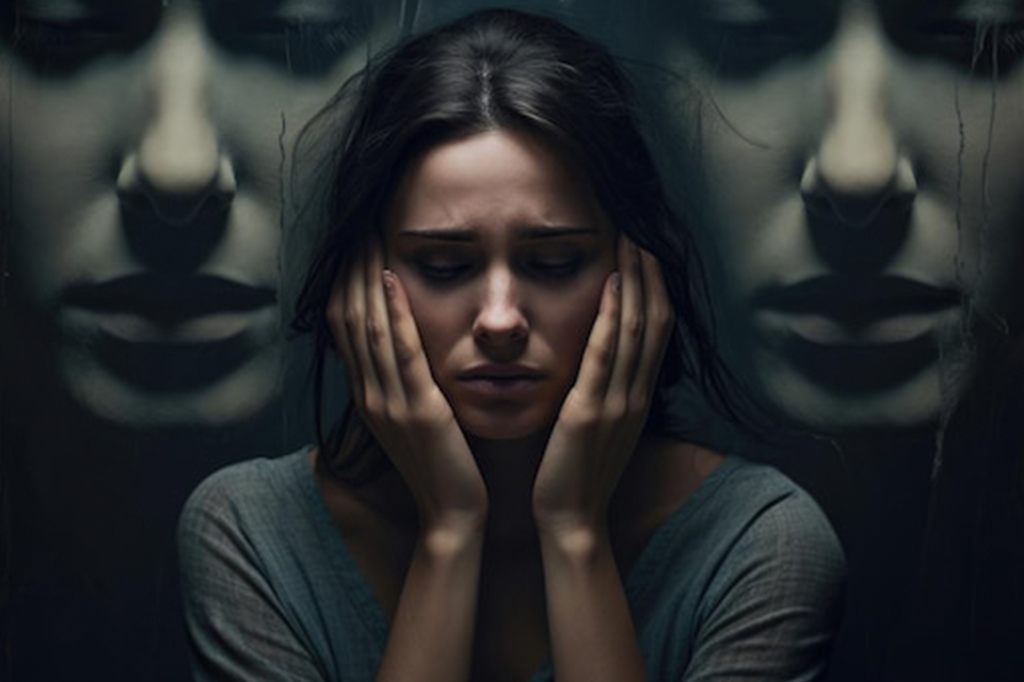
Why Does My Mood Always Change?
Mood fluctuations can stem from various factors, including hormonal shifts, stress, sleep patterns, or even underlying mood disorders. Understanding these influences is key to managing and improving your emotional well-being.
Read More: Connecting the Dots: Can Anxiety Cause Sudden Shortness of Breath?
What Are the Main Characteristics of Mood Disorders?
The main characteristics of mood disorders include marked changes in mood, thinking, and behavior, as already mentioned. People suffering from this disorder may experience extreme mood states, such as episodes of mania or hypomania (in the case of affective disorders) or episodes of depression (in the case of depressive disorders).
Hypomania
Before we address the issue of hypomania, it is important to mention a stage of the mood disorder known as mania. During this period, the person feels capable of doing anything without taking into account the physical and emotional consequences, presenting excessive, continuous energy and increasing impulsivity throughout the days.
On the other hand, hypomania (a milder form of mania) manifests itself when a person experiences an elevated mood, feeling more energized than usual, without a direct relationship to external events. In this state, it is also possible to experience episodes of increased irritability, although to a lesser extent and without significantly affecting the person’s life.
According to the Diagnostic and Statistical Manual of Mental Disorders (DSM-5) , hypomanic episodes must occur for at least 4 consecutive days.
Considering the difference between mania and hypomania, it is important to highlight that some characteristics may go unnoticed by those experiencing these states. Discover the main symptoms of hypomania now:
- mental confusion;
- difficulty concentrating;
- need to talk constantly, even interrupting people;
- impulsivity;
- agitation.
It is worth mentioning that these symptoms can also occur during mania, however, at a lower intensity.
Depression
Depression is an element present in mood disorders, but it differs in that it is not continuous (unipolar). In this case, this type of depression occurs alternately with mania and hypomania, also for no apparent reason.
Within a few weeks, a person may experience symptoms of mania and hypomania while remaining well, happy, and productive. In the following week, you may experience depression that can last from days to months.
The symptoms of depression in this disorder, despite the differences from unipolar depression, are of the same intensity. Discover the main symptoms now, which can last at least a week:
- deep sadness;
- isolation;
- apathy;
- changes in sleep;
- weight loss or gain;
- low self-esteem;
- reduced libido;
- suicidal thoughts.
Symptoms of mood disorders vary from person to person and can include feelings of sadness, irritability, euphoria, lack of energy, racing thoughts, difficulty concentrating and insomnia, among others. Some people may also have physical symptoms, such as headache, ADHD, chest pain, nausea, and changes in appetite and sleep.
Can Depression Cause Anger Issues?
Yes, depression can lead to anger issues. While often associated with sadness, depression can manifest as irritability or anger, impacting emotional well-being.

What Are the Most Common Mood Disorders?
There are several different mood disorders, but the most common include bipolar affective disorder, depressive episode, and recurrent depressive disorder.
Bipolar Disorder Anger
Bipolar affective disorder is a psychiatric disorder characterized by episodes of mania, hypomania, and depression. During episodes of mania or hypomania, people feel happy, energized, and persistent, with racing thoughts and lack of sleep.
During episodes of depression, they face aggressive bipolar disorder symptoms. They may feel sad, desperate, and without energy, with a loss of interest in activities that previously gave them pleasure.
Depressive Episode
This type is characterized by repeated episodes of depression over time, with periods of remission in between. The symptoms are similar to those of a depressive episode, but recurrent depressive disorder appears when a person has at least two episodes of depression within two years.
Recurrent Depressive Disorder
Recurrent depressive disorder is characterized by having 3 or more episodes of major depressive disorder above. This means that having this condition means having gone through several bouts of depression.
Although mood swings are common, when sadness persists for more than 2 weeks, it is important to seek professional help, as it could be a depressive episode.
This is the more serious form than common depression, as the condition returns even after conventional treatments. It is, therefore, one of the main causes of retirement for mental health reasons.
Episodes are classified as mild, moderate or severe, according to the symptoms presented. Unlike personality disorders such as antisocial personality disorder, recurrent depressive disorder can be affected at any age and is more common in women.
How Do People with Mood Disorders Behave?
People with a mood disorder may experience a variety of symptoms, ranging from mild to severe. Symptoms often include changes, as shown below:
- depressive or manic mood;
- anxiety;
- suicidal thoughts;
- changes in the ability to perform daily tasks;
- changes in the ability to maintain relationships;
- changes in behavior;
- learning difficulties;
- thinking problems;
- sleep disorder;
- Obsessive Compulsive Disorder.
These changes can affect the way people behave in their social environment, at work or school, as well as in their home lives. People with mood disorders often have difficulty controlling their behavior and feel stressed, anxious, or irritable.
They have difficulty focusing and staying motivated. Therefore, they have an unstable mood and overreact to external stimuli. Some people may have impulsive behavior, such as spending and overeating, using drugs or alcohol, or engaging in risky sexual behavior.
It is often difficult to realize that you are suffering from a mood disorder. Therefore, it is important to reflect on the last few weeks and ask the people you live with about your doubts. Seeking professional help as soon as possible is essential to find a lighter path, and increase well-being and self-understanding.
Read More: What Practices and Habits Can Help Alleviate the Symptoms of Bipolar Disorder?
What Causes Extreme Mood Swings?
Extreme mood swings can result from hormonal changes, sleep disturbances, stress, or underlying mental health conditions. If persistent, seek professional advice for a thorough understanding.
Treatment of Mood Disorders
Every person who is suffering must get professional help, here are some of the options for treatment for mood swings,
- Therapy: Engaging in counseling or psychotherapy to explore and address underlying causes.
- Medication: Prescribed medications to regulate mood and alleviate symptoms.
- Lifestyle Changes: Adopting healthier habits, including exercise and a balanced diet.
- Support Groups: Participating in peer support for shared experiences and coping strategies.
- Mindfulness Practices: Incorporating techniques like meditation for improved emotional regulation.
- Stress Management: Developing skills to manage stress, a common contributor to mood disorders.
- Sleep Hygiene: Prioritizing good sleep habits to positively impact mood and mental health.
- Regular Check-ins: Consistent monitoring and communication with healthcare professionals.
Conclusion: What Are Mood Disorders?
In wrapping up our discussion about what are mood disorders, it’s clear that understanding these complexities is a crucial step toward better mental health. Recognizing symptoms, seeking help, and breaking the stigma are pivotal for fostering a future where emotional well-being is a shared priority.
Choose Brainpower Wellness Institute for compassionate, expert support in your mental health journey. We’re dedicated to providing personalized care for a brighter, emotionally resilient future.
